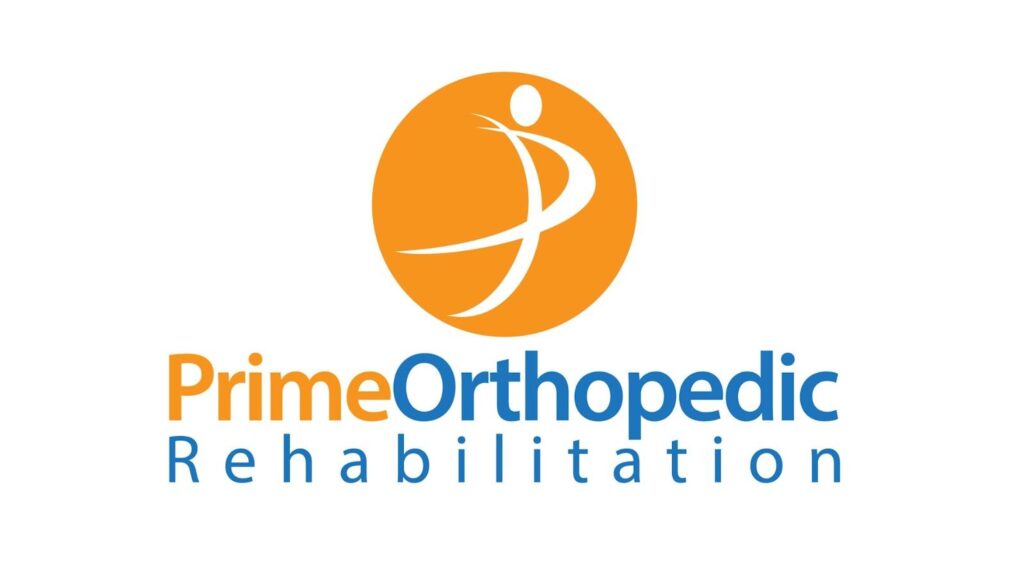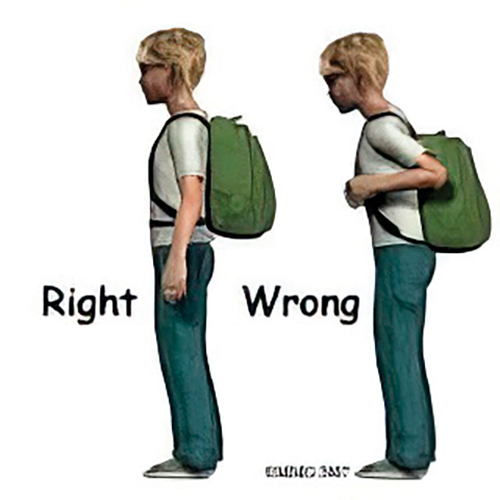

As September arrives and a new school year starts, it always brings us to the concern of posture and body mechanics in children, adolescents and teens. Very often, children of school age are treated in our office for neck and back pains generated by poor posture from sitting incorrectly all day in class, looking down at their phone and computer for extended lengths of time or even from carrying a heavy backpack on their back.
For many students, the backpack is an essential school accessory, but its weight can have significant implications for their health. Students often compensate for heavy backpacks by leaning forward or slouching, which can contribute to poor posture. As a result of the heavy weight and unnatural position, children can develop shoulder, neck and back pain. Additionally, this incorrect posture can become ingrained, potentially leading to long-term spinal issues such as kyphosis or scoliosis of the spine and musculoskeletal disorders. Poor posture is also linked with decreased lung capacity and digestive issues as well.
Your child may experience headaches, fatigue and/or numbness in an arm because the backpack is too heavy or the strap is too thin and could be impinging on their neck or shoulder. By wearing a backpack over just one shoulder or carrying books in a messenger bag the student may end up leaning to one side to offset the extra weight. “Backpack syndrome” is a term referring to the various physical maladies associated with wearing a heavy backpack and wearing one incorrectly.
The uneven pressure of the backpack creates poor posture, which also causes gait deviations. Altered walking mechanics can potentially lead to hip and knee pain as well. Carrying a backpack asymmetrically also leads to the development of muscle imbalances between the two sides of the body.
No matter how well-designed the backpack, less weight is always better. Use the bathroom scale to check that a pack isn’t over 10-15% of your child’s body weight. This is the percentage recommended by the American Academy of Pediatrics. For example, a child who weighs 80 pounds shouldn’t carry a backpack that weighs more than 8-12 pounds.The bottom of the backpack should rest at the small of the back (at the lower lumbar) and never go four inches below the waistline. The ideal backpack will distribute weight evenly to reduce strain on your back and shoulders, have plenty of lower back padding and a waist or chest strap.
Overuse and muscle strains are by far the most common causes of back pain in children and teens. These pains can usually resolve after a period of rest, activity modification and postural education.
Some suggestions for backpack usage:
Keep the backpack lighter by going through the backpack every few weeks and take out the unnecessary stuff that’s accumulated — garbage, extra pens, that calculator needed one time for class, etc. All of those little things add up to unnecessary weight.
Distribute the weight by using both straps and make sure they’re adjusted to sit evenly on shoulders. If possible, use chest or hip straps as well, to take the pressure off of shoulders.
Consider purchasing an ergonomic backpack. An ergonomic backpack is designed to support and protect your child’s body. It will be more adjustable than other standard backpacks and straps and back will be more cushioned.
Choose the smallest backpack that fits your child’s functional needs. The backpack should not go above their shoulders or fall below their hips.
Compartment backpacks with more than one compartment allow children to distribute weight. Pack heavier items closer to their back and lighter items toward the outside.
Look for straps that are adjustable and have a sufficient amount of padding to protect shoulders from the weight of the backpack. Use both straps to distribute the weight evenly.
Hip and chest belts can be used to improve balance and reduce pressure put on shoulders.
Your children are going to be wearing backpacks a lot, so make sure they try it on just like they would a pair of shoes.
Choose a wheeled backpack that they can roll on wheels rather than carry on their back.
In addition, safe lifting with proper body mechanics is so important when someone is lifting and moving. You can teach your child to protect their body from avoidable injuries and pain by teaching them how to lift properly; Teach them to use their legs, don’t bend to the side, keep their back straight, use both hands, and keep their wrist straight when lifting with one hand.
Seeking the expertise of a physical therapist is a proactive step toward improving your health and well-being. Whether you’re recovering from an injury, managing a chronic condition or simply aiming to enhance your physical fitness, the physical therapists at Prime Orthopedic Rehabilitation can provide the guidance and support you need. Our physical therapists’ specialized knowledge, personalized treatment plans and commitment to your overall health make us invaluable partners in your journey toward better health. Don’t hesitate to consult a physical therapist at Prime Orthopedic Rehabilitation and discover how we can help you heal faster, heal stronger and return to your prime.
At Prime Orthopedic Rehabilitation, we have both male and female therapists. Our therapists all hold advanced certifications to help with your specific needs, including Orthopedic Certified Specialist (OCS) certifications for orthopedic specialties; McKenzie approach for spine; Schroth Certification for Scoliosis, Graston and John Barnes techniques for myofascial release; as well as LSVT (BIG) for Parkinson’s treatment, Vestibular rehab for dizziness, balance and vertigo, Strength and Conditioning certifications (CSCS) for sports rehab; as well as therapists certified in dry needling, cupping and instrument assisted soft tissue mobilization (IASTM).
We offer general outpatient physical and occupational therapy in both of our offices in Tenafly and in Northvale, as well as in-home for those patients who have a hard time leaving the house. Prime also has 73 5-star Google reviews and offers more one on one time than most other offices. Call us today to ask how we can help you at (201) 503-7173.
Jessica Lowy, DPT, CMTPT, DN, Mckenzie A-D, Advanced Schroth Therapist, and Michal Porath, MPT, Mckenzie A-D, Advanced Schroth Therapist, are owners of Prime Orthopedic Rehabilitation in Tenafly and Northvale, New Jersey They treat all injuries in their clinic in addition to general orthopedic and post-surgical patients. Call (201) 503-7173 for an appointment.










